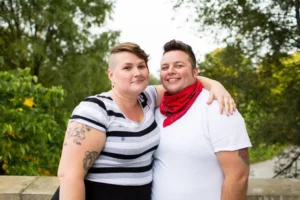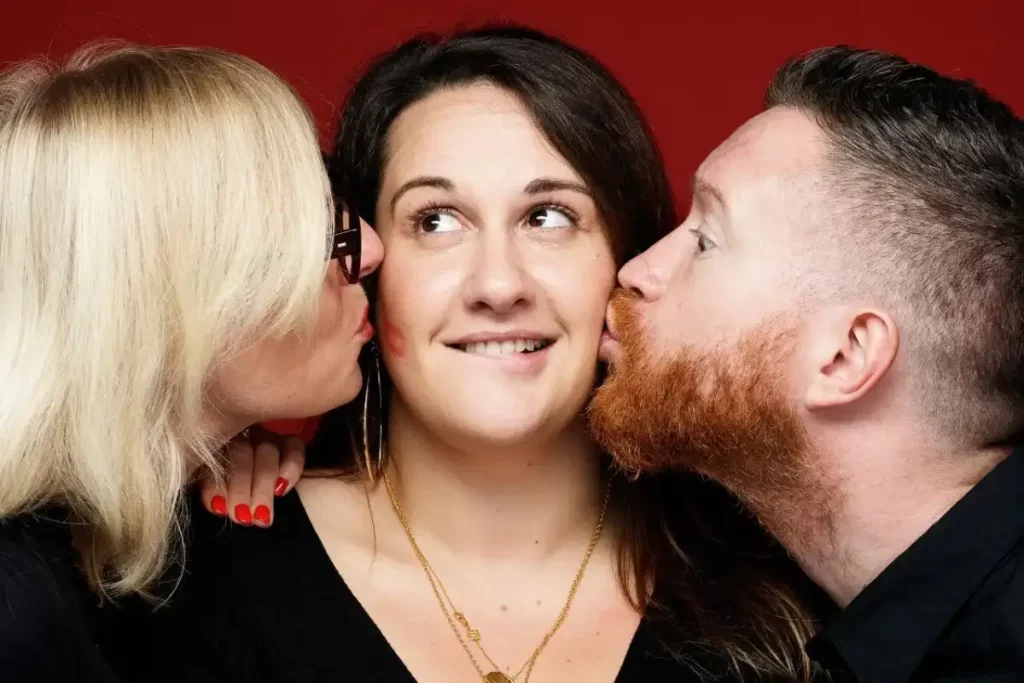Have you ever found yourself in a position where you just can’t find the right words to explain your feelings? Or perhaps you’re navigating your own journey, identifying as homosexual or bisexual, and yearning for a deeper understanding of your feelings, a validation of your experiences, and resources to support your path. So, in this blog, we’re embarking on a deep dive into the realms of homosexuality and bisexuality. Through exploring definitions, debunking myths, and discussing resources, we aim to foster a better understanding of these aspects of the sexual spectrum. So let’s quickly dive in!
Contents
Definitions and Key Concepts
 Before we delve deeper, let’s get our terms straight – or, in this case, homosexual and bisexual! Homosexuality refers to an enduring pattern of emotional, romantic, and/or sexual attractions primarily or exclusively to people of the same sex. Conversely, bisexuality involves emotional, romantic, and/or sexual attraction to both men and women or to more than one gender.
Before we delve deeper, let’s get our terms straight – or, in this case, homosexual and bisexual! Homosexuality refers to an enduring pattern of emotional, romantic, and/or sexual attractions primarily or exclusively to people of the same sex. Conversely, bisexuality involves emotional, romantic, and/or sexual attraction to both men and women or to more than one gender.
But sexuality isn’t a neatly defined box; it’s more like a spectrum, an array of variations that range across a broad continuum. This spectrum acknowledges the fluid nature of sexual orientation, recognizing that a person’s sexuality may shift and evolve over time.
The Kinsey Scale, developed by Dr. Alfred Kinsey in the mid-20th century, was one of the first models to illustrate this spectrum. On this scale, “0” represents exclusively heterosexual behavior, and “6” denotes exclusively homosexual behavior, with varying degrees of bisexuality in between. More contemporary models, such as the Klein Sexual Orientation Grid and the Genderbread Person, further consider aspects like emotional preference, social preference, lifestyle, and self-identification.
It’s crucial to remember that each person’s place on the spectrum is unique and self-determined. It’s about understanding and honoring your feelings, attractions, and experiences. So whether you identify as homosexual, bisexual, or somewhere else on this vibrant spectrum, know that your sexuality is an integral part of who you are and it deserves recognition and respect.
Challenges Faced by Homosexual and Bisexual Individuals

Despite the progress society has made, individuals identifying as homosexual or bisexual often face a myriad of unique challenges. Let’s delve deeper into understanding what these obstacles might entail
- Discrimination and Stigma: Homosexual and bisexual individuals often face discrimination and stigmatization due to their sexual orientation, which can occur in various settings such as in the workplace, in housing, and within their own families.
- Increased Risk of Mental Disorders: Due to societal pressures and discrimination, individuals identifying as homosexual or bisexual are at a higher risk of mental health disorders, including anxiety, depression, and suicidal thoughts.
- Legal Challenges: In many parts of the world, homosexual and bisexual individuals are still fighting for their basic human rights, such as marriage equality, protection against discrimination, and the right to adopt.
- Healthcare Discrimination: Access to quality healthcare can be a major challenge for homosexual and bisexual individuals, due to bias or ignorance within the medical community.
- Erasive Bisexuality: Society often questions or outright denies the existence or legitimacy of bisexuality, a pervasive problem known as ‘bisexual erasure’ or ‘bisexual invisibility’
- Internalized Homophobia/Biphobia: Internalized negative attitudes, beliefs, and biases about homosexuality or bisexuality can lead to significant emotional distress and self-esteem issues.
- Coming Out: The process of ‘coming out’ or disclosing one’s sexual orientation can be stressful and challenging due to fear of rejection, discrimination, or violence.
- Misunderstanding and Stereotyping: There is a widespread misunderstanding and stereotyping about homosexuality and bisexuality, leading to harmful myths and misconceptions.
Each of these challenges contributes to the unique experiences of homosexual and bisexual individuals, underlining the need for increased understanding, acceptance, and support.
Common Myths & Misconceptions
 People often say that knowledge is power, but misinformation can also wield a potent influence. Let’s now debunk some of the common myths and misconceptions that often contribute to confusion and bias.
People often say that knowledge is power, but misinformation can also wield a potent influence. Let’s now debunk some of the common myths and misconceptions that often contribute to confusion and bias.
- Bisexuality is Just a Phase: This myth suggests that bisexuality is a temporary state and that individuals will eventually choose to be either heterosexual or homosexual. The reality is that bisexuality is a valid, enduring sexual orientation.
- Homosexual People Can Be ‘Cured’ or ‘Converted’: There is no scientific evidence to support the harmful and unethical practice of ‘conversion therapy’. Sexual orientation is a deeply ingrained aspect of one’s identity and cannot be changed through therapy or coercion.
- Bisexual Individuals are Equally Attracted to All Genders: Bisexuality involves attraction to more than one gender, but this doesn’t mean the attraction is equally split. Individuals can experience different degrees of attraction to different genders at different times.
- Homosexual Individuals Can’t Be Parents: Consistent research demonstrates that homosexual parents exhibit just as much capability as their heterosexual counterparts. The sexual orientation of parents has no bearing on the well-being of the child.
- Bisexual People Are Just Promiscuous: This stereotype wrongly associates bisexuality with promiscuity. Simply being attracted to more than one gender defines bisexuality; it doesn’t determine an individual’s sexual behavior or moral character.
- All Homosexual Individuals Exhibit Gender-Nonconforming Behaviors: This myth assumes all homosexual men are effeminate and all homosexual women are masculine. The reality is that sexual orientation and gender expression are two different aspects of a person’s identity.
By debunking these misconceptions, we pave the way for a more open, accurate understanding of homosexuality and bisexuality.
How To Support Individuals?
“With a better understanding of the challenges faced by individuals identifying as homosexual or bisexual, you might wonder, ‘How can I support?’ Whether you’re an ally seeking to support others, or you’re navigating your own journey, here are some ways you can make a difference:
- Educate Yourself and Others: Learning is the first step to understanding. Educate yourself about the spectrum of sexual orientations, and share this knowledge with others to dispel myths and misconceptions.
- Advocate for Rights: Stand up for the rights of homosexual and bisexual individuals in your community. This can include advocating for equal rights legislation, supporting businesses that respect diversity, and speaking out against discrimination.
- Support Mental Health: Recognize the mental health challenges that homosexual and bisexual individuals may face. Encourage and facilitate access to mental health resources, and be a safe and understanding ear for those who need it.
- Celebrate Pride: Participate in Pride events and other LGBTQ+ celebrations. These events promote visibility and acceptance, and they’re a great way to show your support for the community.
- Support LGBTQ+ Organizations: Many non-profit organizations work tirelessly to support the rights and welfare of the LGBTQ+ community. Consider donating to these organizations or volunteering your time.
- Be an Ally at Work: If you’re in a position to do so, advocate for inclusive and non-discriminatory policies in your workplace. Make sure your colleagues, regardless of their sexual orientation, feel seen, heard, and respected.
- Encourage Open Conversations: Encourage dialogues about sexual orientation in your social circles. Open, honest conversations can foster understanding and acceptance.
By actively supporting individuals and the community at large, we can each contribute to a more understanding, accepting, and inclusive world.
Conclusion
As we draw this exploration to a close, it’s clear that understanding and accepting homosexuality and bisexuality isn’t simply about learning definitions or theoretical models. It’s about acknowledging the rich, varied tapestry of human experience, recognizing the challenges faced by individuals, and actively working to support them. After all, within the grand, diverse spectrum of human experience, we should celebrate love in all its forms, not merely accept it
Life may sometimes be challenging for bisexuals, but Online Bisexual Counseling can help. Get experienced LGBTQ therapists at PrideMantra: Book a trial LGBTQ therapy session.


